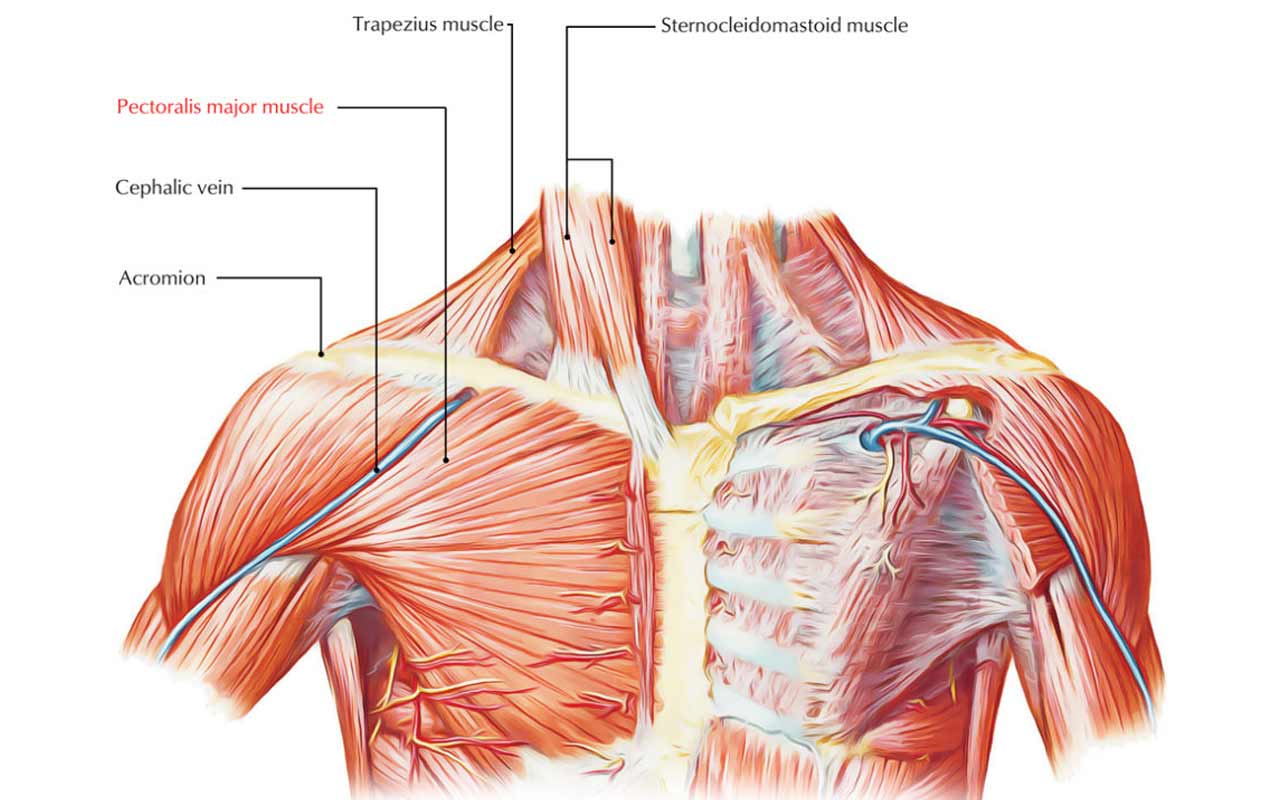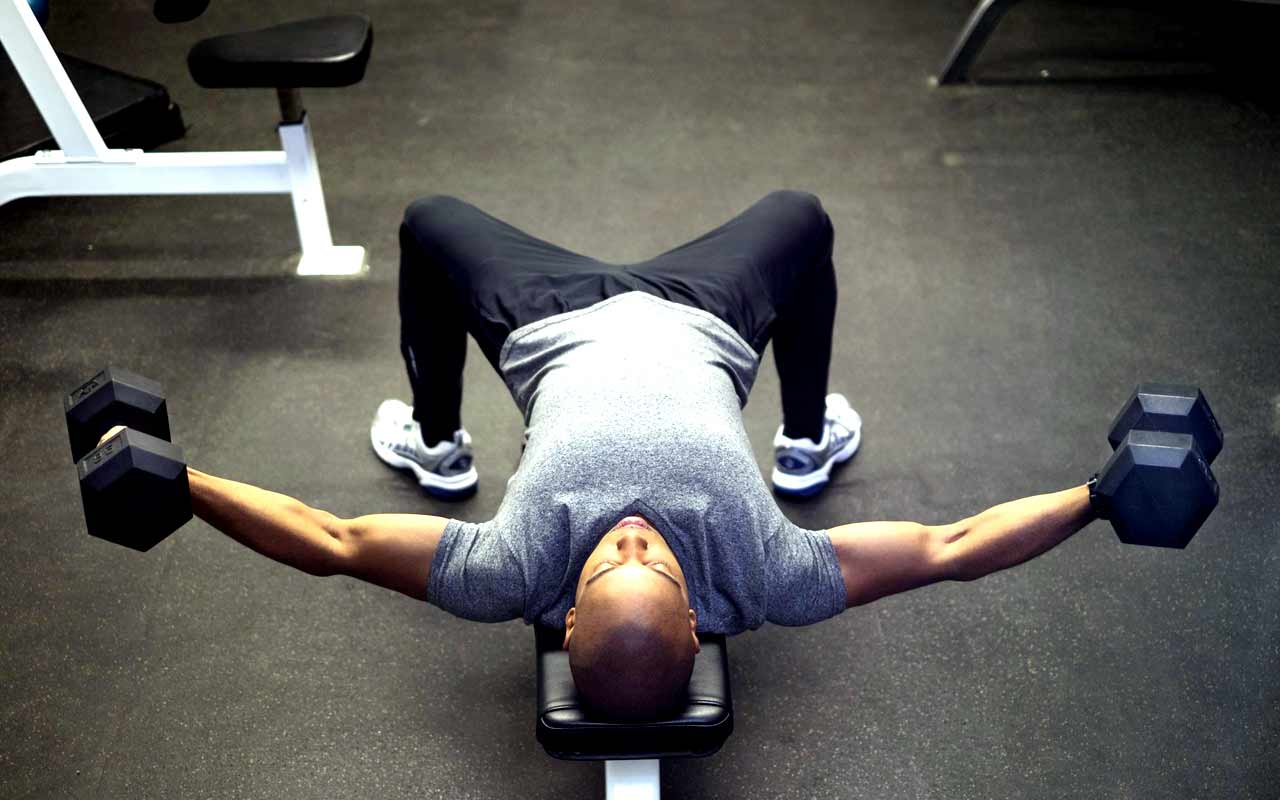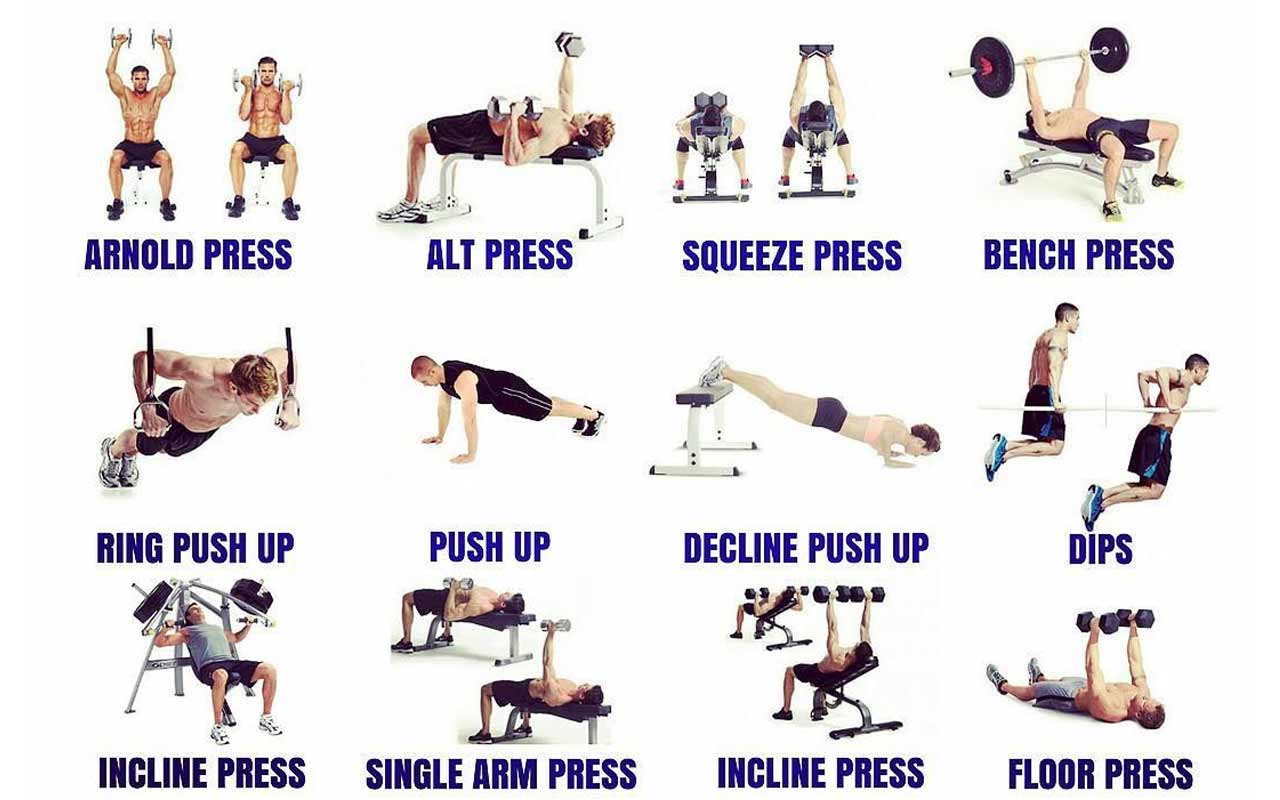If you want to improve your chest muscles, you need to follow a well-designed chest training program that targets all the different parts of your chest.
In this article, you will learn about the anatomy and function of the chest muscles, the benefits of chest training, the best chest exercises and variations, and how to schedule your chest workouts for optimal results.
You will also find a sample chest workout routine that you can try at home or at the gym.
Table of Contents
Chest Muscle Anatomy and Function

The chest muscles are composed of two main muscles: the pectoralis major and the pectoralis minor. The pectoralis major is the larger and more visible muscle that covers most of the chest.
It has two heads: the clavicular head, which attaches to the collarbone, and the sternal head, which attaches to the sternum and the ribs. The pectoralis major is responsible for moving the arm across the chest, as in a chest fly, and pressing the arm forward, as in a bench press. It also helps to rotate the arm inward, as in a cable crossover.
The pectoralis minor is a smaller and deeper muscle that lies underneath the pectoralis major. It attaches to the scapula (shoulder blade) and the ribs. The pectoralis minor helps to stabilize the scapula and pull it downward and forward, as in a dip. It also assists in breathing by lifting the ribs during inhalation.
Benefits of Chest Training
Training your chest muscles can provide many benefits for your health, fitness, and appearance. Some of the benefits of chest training are:
- Improved posture: Strong chest muscles can help you maintain a good posture by keeping your shoulders back and your chest up. This can prevent slouching and hunching, which can cause neck and back pain, headaches, and reduced lung capacity.
- Increased strength: Chest training can improve your strength in pushing movements, such as pushing a door, a cart, or an opponent. This can enhance your performance in sports and daily activities that require upper body power.
- Greater shoulder joint stabilization: Chest training can strengthen the muscles that surround and support the shoulder joint, such as the rotator cuff, the deltoids, and the trapezius. This can prevent shoulder injuries and improve your shoulder mobility and stability.
- Enhanced chest appearance: Chest training can increase the size and definition of your chest muscles, giving you a more muscular and attractive look. This can boost your confidence and self-esteem, as well as attract more attention from others.
For those seeking to How to Increase Chest Size, this guide provides a comprehensive roadmap to achieving your desired results.
Best Chest Exercises and Variations

There are many exercises that you can do to train your chest muscles, but some are more effective than others. The best chest exercises are those that allow you to use a full range of motion, activate the most muscle fibers, and challenge your chest from different angles and intensities.
Here are some of the best chest exercises and variations that you should include in your chest training program:
- Barbell Bench Press: The barbell bench press is the king of chest exercises, as it allows you to lift the most weight and work the entire chest, as well as the triceps and shoulders. You can vary the angle of the bench to target different parts of the chest: a flat bench works the middle chest, an incline bench works the upper chest, and a decline bench works the lower chest. You can also vary the grip width and style to emphasize different muscle fibers: a wide grip works the outer chest, a narrow grip works the inner chest, and a reverse grip works the upper chest and the triceps.
- Dumbbell Bench Press: The dumbbell bench press is a great alternative to the barbell bench press, as it allows you to use a greater range of motion, adjust the angle of your arms, and correct any muscle imbalances. You can perform the dumbbell bench press on a flat, incline, or decline bench, and use different dumbbell positions, such as neutral, pronated, or supinated, to target different parts of the chest.
- Chest Fly: The chest fly is an isolation exercise that focuses on the chest muscles, especially the inner chest. You can perform the chest fly with dumbbells, cables, or machines, and on a flat, incline, or decline bench. The chest fly involves bringing your arms together in front of your chest, squeezing your pecs at the peak of the movement, and then lowering your arms back to the sides, stretching your chest at the bottom of the movement.
- Push-Up: The push-up is a classic bodyweight exercise that works the chest, as well as the triceps, shoulders, and core. You can perform the push-up on the floor, on an elevated surface, or with your feet elevated, and use different hand positions, such as wide, narrow, or diamond, to target different parts of the chest. You can also add some variations, such as clap push-ups, superman push-ups, double knee tap push-ups, and plyo push-ups, to increase the difficulty and intensity of the exercise.
- Dip: The dip is another bodyweight exercise that works the chest, as well as the triceps and shoulders. You can perform the dip on parallel bars, rings, or a dip station, and lean forward to emphasize the chest, or keep your body upright to emphasize the triceps. You can also add some weight to the dip, such as a weight belt, a vest, or a backpack, to make it more challenging.
Chest Workout Schedule
To get the best results from your chest training, you need to follow a proper chest workout schedule that allows you to train your chest with enough frequency, volume, and intensity, while also giving it enough time to recover and grow. Here are some general guidelines for your chest workout schedule:
Frequency: You should train your chest at least once a week, but not more than twice a week, to stimulate muscle growth and avoid overtraining. If you train your chest once a week, you can do a full chest workout that covers all the parts of the chest.
If you train your chest twice a week, you can split your chest workout into two sessions, such as an upper chest workout and a lower chest workout, or a heavy chest workout and a light chest workout.
Volume: You should do 12 to 20 sets per chest workout, depending on your goal, experience level, and recovery ability. If your goal is to build muscle mass, you can do more sets with moderate weights and reps.
If your goal is to build strength, you can do fewer sets with heavier weights and lower reps. If you are a beginner, you can start with 12 sets per chest workout and gradually increase the volume as you progress.
If you are an advanced lifter, you can do up to 20 sets per chest workout, but make sure to vary the intensity and rest periods to avoid overtraining.
Intensity: You should train your chest with a high intensity, meaning that you should lift weights that challenge you and make you work hard.
You should aim to reach muscular failure, or the point where you cannot do another rep with good form, on most of your sets.
You can also use some advanced training techniques, such as drop sets, forced reps, rest pause, supersets, and tri-sets, to increase the intensity and muscle stimulation of your chest workout.
Rest: You should rest for 48 to 72 hours between chest workouts, to allow your chest muscles to recover and grow. You should also rest for 60 to 120 seconds between sets, depending on the exercise, the weight, and the reps.
You can rest for shorter periods for isolation exercises, lighter weights, and higher reps, and for longer periods for compound exercises, heavier weights, and lower reps.
Sample Chest Workout Routine

Here is a sample chest workout routine that you can try at home or at the gym. This chest workout routine is designed to train your chest once a week, with a high volume and intensity, and to target all the parts of the chest.
You can adjust the weights, reps, and rest periods according to your goal, level, and preference.
- Exercise Sets Reps Rest
- Barbell Bench Press 4 6-10 90 sec
- Incline Dumbbell Press 4 8-12 90 sec
- Decline Barbell Bench Press 4 10-15 60 sec
- Cable Fly (2 Angles) 4 (2 sets per angle) 12-20 60 sec
- Dumbbell Pullover 3 15-20 60 sec
- Pinch Press 1 AMAP 0 sec
AMAP = As Many As Possible

